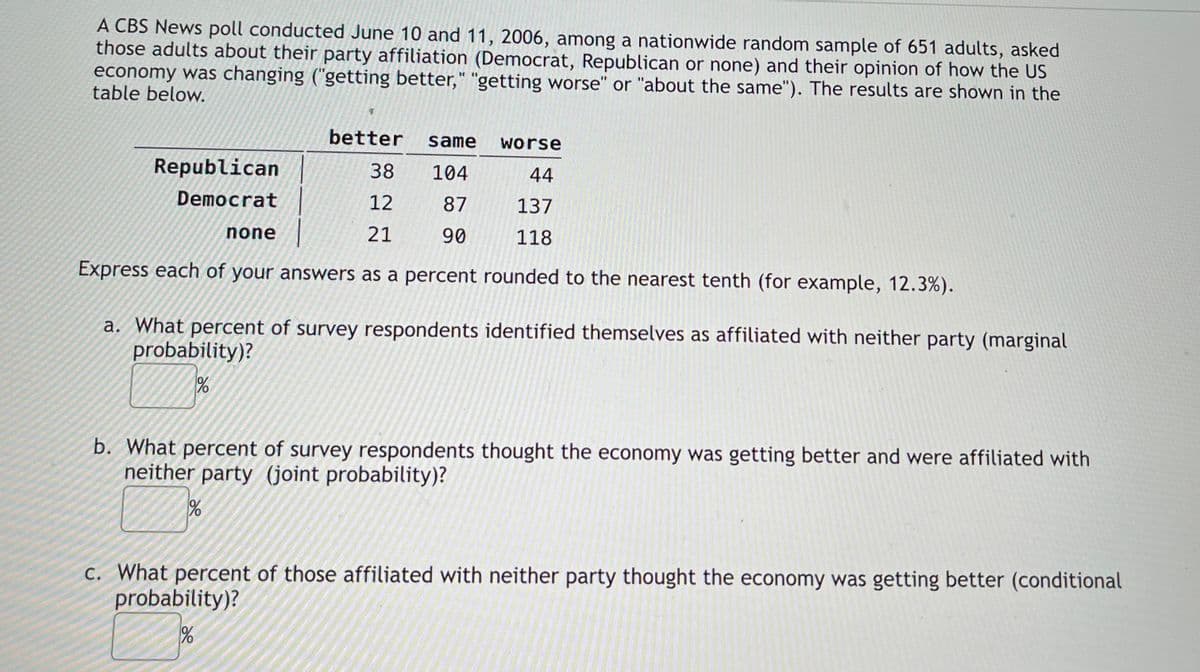A CBS News poll conducted June 10 and 11, 2006, among a nationwide random sample of 651 adults, asked those adults about their party affiliation (Democrat, Republican or none) and their opinion of how the US economy was changing ("getting better," "getting worse" or "about the same"). The results are shown in the table below.
A CBS News poll conducted June 10 and 11, 2006, among a nationwide random sample of 651 adults, asked those adults about their party affiliation (Democrat, Republican or none) and their opinion of how the US economy was changing ("getting better," "getting worse" or "about the same"). The results are shown in the table below.
Algebra & Trigonometry with Analytic Geometry
13th Edition
ISBN:9781133382119
Author:Swokowski
Publisher:Swokowski
Chapter10: Sequences, Series, And Probability
Section10.7: Distinguishable Permutations And Combinations
Problem 29E
Related questions
Question

Transcribed Image Text:A CBS News poll conducted June 10 and 11, 2006, among a nationwide random sample of 651 adults, asked
those adults about their party affiliation (Democrat, Republican or none) and their opinion of how the US
economy was changing ("getting better," "getting worse" or "about the same"). The results are shown in the
table below.
better
same
worse
Republican
38
104
44
Democrat
12
87
137
none
21
90
118
Express each of your answers as a percent rounded to the nearest tenth (for example, 12.3%).
a. What percent of survey respondents identified themselves as affiliated with neither party (marginal
probability)?
b. What percent of survey respondents thought the economy was getting better and were affiliated with
neither party (joint probability)?
c. What percent of those affiliated with neither party thought the economy was getting better (conditional
probability)?
Expert Solution
This question has been solved!
Explore an expertly crafted, step-by-step solution for a thorough understanding of key concepts.
This is a popular solution!
Trending now
This is a popular solution!
Step by step
Solved in 4 steps with 4 images

Recommended textbooks for you

Algebra & Trigonometry with Analytic Geometry
Algebra
ISBN:
9781133382119
Author:
Swokowski
Publisher:
Cengage

Trigonometry (MindTap Course List)
Trigonometry
ISBN:
9781337278461
Author:
Ron Larson
Publisher:
Cengage Learning

Algebra & Trigonometry with Analytic Geometry
Algebra
ISBN:
9781133382119
Author:
Swokowski
Publisher:
Cengage

Trigonometry (MindTap Course List)
Trigonometry
ISBN:
9781337278461
Author:
Ron Larson
Publisher:
Cengage Learning